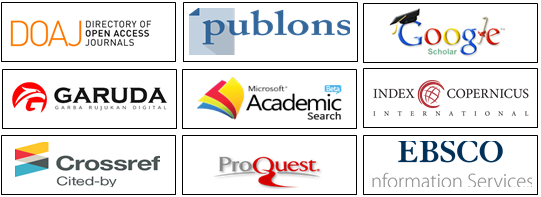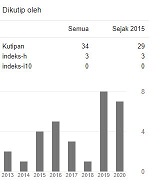Teaching Learning Activities Among Students with Physical Disabilities
Abstract
Keywords
Full Text:
PDFReferences
Andrade, M. D. M. C., & Fukuda, C. C. (2016). School inclusion of people with physical disabilities: The role of social interactions. Interpersonal: An International Journal on Personal Relationships, 10, 22-33. https://doi.org/10.5964/ijpr.v10isupp1.239.
Bateman, B. D. (2017). Individual education programs for children with disabilities. In handbook of special education. Routledge, Taylor and Francis Group
Boch, F., & Pilot, A. (2005). Note taking and learning a summary of research. The WAK Journal, 16, 101-113, https://doi: 10.37514/WAC-J.2005.16.1.08
Central Bureau of Statistics. (2011). Nepal Census Report. Author, Kathmandu.
Cho, K. S., & Hong, E. J. (2013). A path analysis of the variables related to the quality of life of mothers with disabled children in Korea. Stress and Health, 29(3), 229-239, https://doi.org/10.1002/smi.2457
Department of Education, (2012). The Flash Report of Ministry of Education. MOE, Nepal
Eidson, C. C., & Tomlinson, C. A. (2003). Differentiation in practice: A resource guide for differentiating curriculum, Grades K-5. ASCD.
Freire, P. (2000). Pedagogy of freedom: Ethics, democracy, and civic courage. Rowman & Littlefield Publishers.
Greenwood, C. R., Bradfield, T., Kaminski, R., Linas, M., Carta, J. J., & Nylander, D. (2011). The response to intervention (RTI) approach in early childhood. Focus on Exceptional Children, 43(9), 1-22. https:// doi:10.17161/fec. v43i9.6912
Harte, H. A. (2013). Universal Design and Outdoor Learning. Dimensions of Early Childhood, 41(3), 18-22. Retrieved from: https://www.academia.edu/11575293/Universal design and outdoor learning
Ibe-Bassey, G. S. (2011). Human capacity building for information and communication technology (ICT) integration in teacher education in Nigeria. In A Lead Paper presented at the 3rd international conference of Nigeria Association Educational Media and Technology (NAEMT), Nigeria.
Joshi, D. N. (2018) Teacher perception on differentiated Instruction and its influences on instructional practice. Kathmandu University: Nepal.
Jung, D. Y., & Pandey, Y. R. (2018). Analysis of current learning reality of the students with physical disabilities in Nepal. Korean Journal, of Physical, Multiple and Health Disabilities, 61(1), 119-138, https:// doi:10.20971/KCPMD.2018.61.1.119.
KC, K.R. (2011). A study on continuous assessment system (CAS) primary level English Tribhuwan University, Kirtipur, Kathmandu.
Kristen, L. (2003). Possibilities offered by interventional sports programs to children and adolescents with physical disabilities; an explorative and evaluative study. Sweden.
Lamichhane, K. (2016). Individuals with visual impairments teaching in Nepal's mainstream schools: a model for inclusion. International Journal of Inclusive Education, 20(1), 16-31. https:// https://doi.org/10.1080/13603116.2015.1073374
Lantolf, J.P. (2000). Introducing Socio-cultural Theory. In Lantolf, J.P., (eds). Socio-cultural theory and second language learning. Oxford University Press, 1-26. New York: Routledge.
Mifflin, H. (2003). Integration Technology for Meaningful Learning. Retrieved from http// sped.wikidot.com/physical disabilities.
National Joint Committee on Learning Disabilities. (1998). Learning disabilities: Preservice preparation of general and special education teachers, Learning Disability Quarterly, 182-186.https://doi.org/10.2307/1511079
Pizzi, J. (2008). Challenges of children with physical disabilities. Rivier Academic Journal
Policy & Practice: A Development Education Review 165UNESCO, (1994). The Salamanca Statement and Framework for action on special needs education: adopted by the World Conference on Special Needs Education; UNESCO (7-10 June 1994), Spain.
Quenneville, Jane. (2001). Tech Tools for Students with Learning Disabilities: Infusion into Inclusive Classrooms. Preventing School Failure, 45. 167-170. https://doi10.1080/10459880109603332. Retrieved from: https://www.european-agency.org/sites/default/files/salamanca-statement-and-framework.pdf
Reed, F., & Monda-Amaya, L. E. (1995). Preparing preservice general educators for inclusion: A survey of teacher preparation programs in Illinois. Teacher Education and Special Education, 18(4), 262-274. https://doi:10.1177/088840649501800406
Shields, N., & Synnot, A. (2016). Perceived barriers and facilitators to participation in physical activity for children with disability: A qualitative study. BMC Pediatrics, 16(1), 1-10. https:// Doi 10.1186/s12887-016-0544-7
Shrestha, S. (2017). Teachers’ attitude towards inclusion of students with intellectual disability in community schools in Nepal. Kathmandu University, Kathmandu.
Tomlinson, C. A., & Imbeau, M. B. (2010). Leading and managing a differentiated classroom Retrieved.
UNESCO (2008) Geneva. Inclusive education: The way of the future. Conclusions and Recommendations of the 48th session of the International Conference on Education. Retrieved from: https://unesdoc.unesco.org/ark:/48223/pf0000180629
UNESCO, (2009). Defining an Inclusive Education Agenda: Reflections around the 48th session of the International Conference on Education Geneva. Retrieved from: http://www.ibe.unesco.org/en/document/defining-inclusive-education-agenda-reflections-around-48th-session-international
UNICEF (2003). Example of Inclusive education in Nepal. Kathmandu. Retrieved from: http://www.iccwtnispcanarc.org/upload/pdf/4614728037InclusiveNepal.pdf
UNICEF (2007). Disability-Inclusive Education Practices in Nepal, Kathmandu, Nepal. Retrieved from: http://www.unicef.org/rosa/InclusiveInd.pdf
Refbacks
- There are currently no refbacks.
Copyright (c) 2025 INTERAKSI : Jurnal Kependidikan
ISSN: 1412-2952
INTERAKSI are abstracting & indexing in the following databases:

Published by Fakultas Keguruan dan Ilmu Pendidikan, Universitas Madura
Jl. Raya Panglegur Km 3,5 Pamekasan Phone: (0324) 322231
website: http://ejournal.unira.ac.id/index.php/jurnal_interaksi/index
Email: interaksi@unira.ac.id

INTERAKSI Jurnal Pendidikan by Universitas Madura is licensed under a Creative Commons Attribution 4.0 International License.



